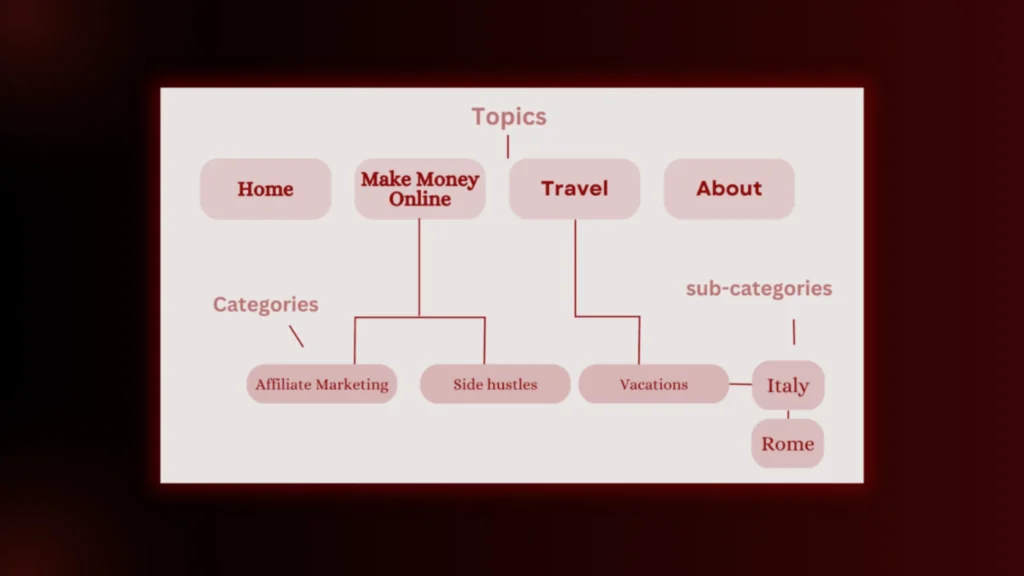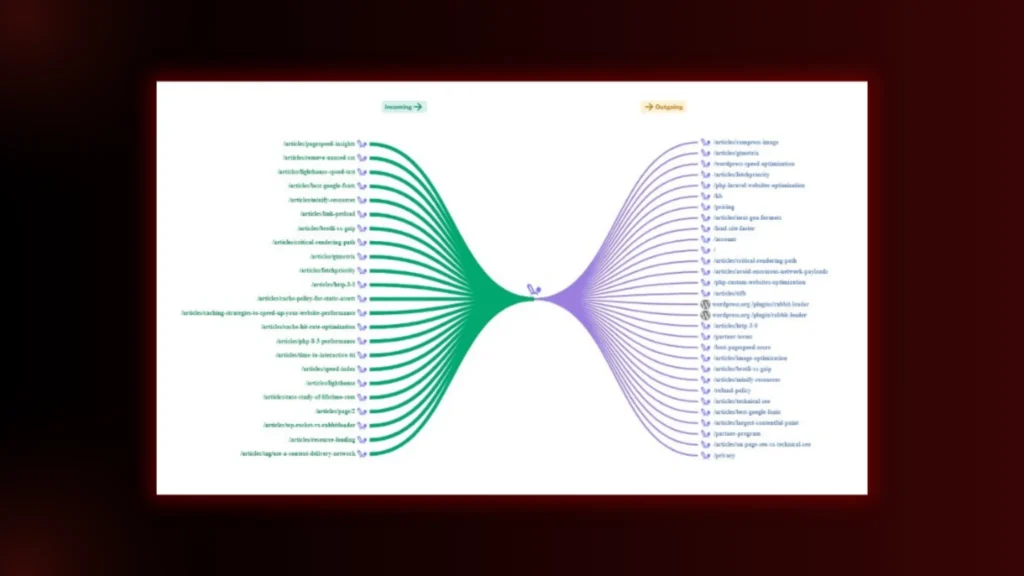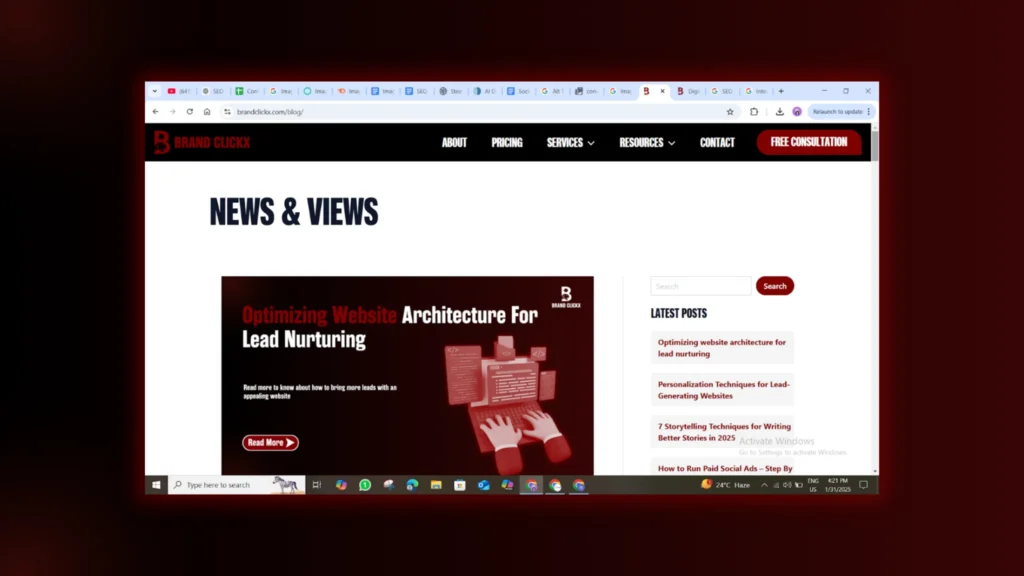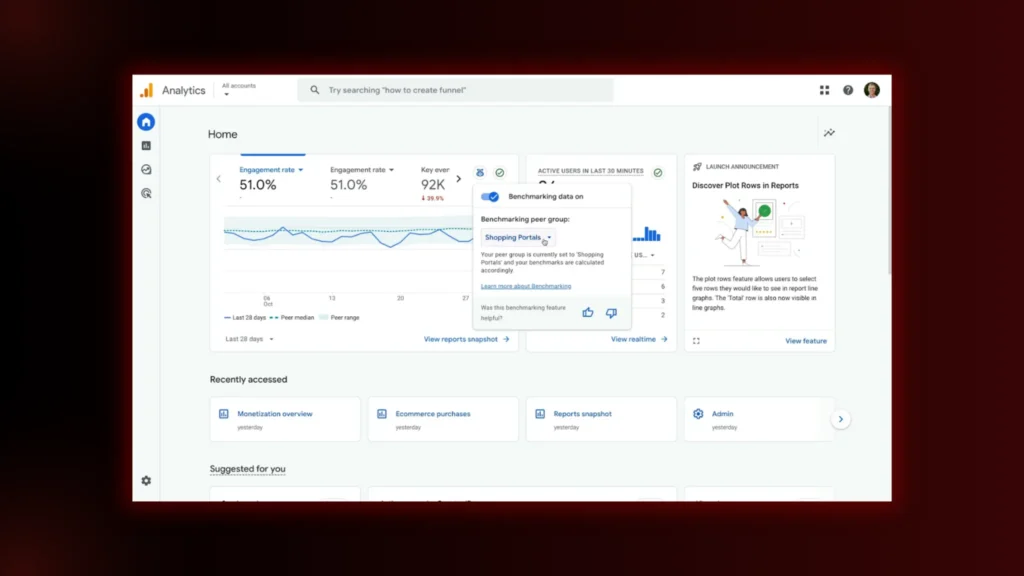If you’re serious about ranking high on search engines, having a well-structured website is crucial. One of the most effective ways to organize your content for both search engines and users is by using SEO Content Silos for a Better Website Structure . This method improves navigation, boosts relevance, and enhances your overall SEO strategy.
But what exactly are content silos, and how do they work? Let’s dive deep into this strategy and explore how you can implement it on your website for better rankings and user experience.
What Are SEO Content Silos?
A content silo is a type of structure used to set in order your website’s content by thematic categories. Place it as a filing cabinet where the core topics are the drawers, and folders inside those are subtopics.
For example, if you run a fitness website, your silos for blogs could be:
Weight Loss (Core Topic)
- Keto Diet for Beginners
- Best Exercises for Burning Fat
- Intermittent Fasting Guide
Muscle Building (Core Topic)
- Best Supplements for Muscle Growth
- Strength Training Routines
- High-Protein Diet Plans
Healthy Living (Core Topic)
- Mental Health Benefits of Exercise
- Stress Management Techniques
- Importance of Sleep for Fitness
Each includes interlinked pages that are highly relevant to each other, and they are self-contained. It gives search engines reason to understand your site better and at the same time gives the users a smooth browsing experience.
Learn how to write engaging content in 6 ways
Why Are Content Silos Important for SEO?
Well-organized, relevant and easy-to-navigate websites are well-positioned to rank above the rest on Google and other search engines. And this is how content silos equate to your SEO success:
1. Improves Keyword Relevance
Search engines will know the main theme of each section of your website by keeping related content in one section and easily grouping it. The result is that your ranking will rise on competitive terms and increase keyword relevance.
2. Enhances Internal Linking Structure
Strong internal linking from silos allows the passing of SEO value (link equity) between pages. That allows the page authority to improve and make that content easier for users to find.
3. Provides a Better User Experience
Visitors who can utilize your site easily and find what they want without obstacles, stay longer. This means that search engines see your content as valuable and therefore provides lower bounce rates and longer dwell times, meaning higher rankings.
4. Helps with Search Engine Crawling and Indexing
Websites can be crawled hierarchically by search engines. Having a well-structured content silo means that Googlebot can easily index and understand each of the pages in context.
Types of SEO Content Silos
There are two main types of content silos you can use:
1. Physical Silos (URL-Based Structure)
This involves structuring your URLs in a way that reflects the hierarchy of your content. For example:
example.com/fitness/weight-loss/keto-diet-guide
This structure makes it clear that the keto diet guide is part of the weight loss category under the broader fitness topic.
2. Virtual Silos (Internal Linking Strategy)
Strategic internal linking creates virtual silos without any changes in the URL structure. For example:
- For example, a blog post “Best Cardio Workouts” links back to the one with the next step “HIIT vs. Steady State Cardio” as a continuing thread between the two subjects.
- Links are provided to articles on “Plant-Based Protein Sources” and “Benefits of a Vegan Diet”, all on “Vegan Diet Plans”.
Both methods are valid and often they are used in combination which gives the best results.
Know about beginner’s guide to SEO 2025
How to Implement an SEO Content Silo Strategy
Now that you understand what silos are, let’s go through a step-by-step guide to creating a content silo for your website.
Step 1: Identify Your Core Topics

First, define the main categories in your website. These should align with your industry and business goals.
Example of a Travel Blog:
- Destination Guides
- Travel Tips & Hacks
- Budget Travel
- Luxury Travel
Step 2: Break Down Categories into Subtopics

Once you have your main silos, brainstorm related subtopics that will form the content inside each category.
Example for “Destination Guides” Silo:
- Best Places to Visit in Europe
- Top Travel Destinations in Asia
- Must-See Attractions in the USA
Step 3: Optimize Your URLs (If Using Physical Silos)

If you choose a physical silo structure, ensure your URLs reflect the hierarchy. Instead of random links like:
example.com/post12345
Use a structured approach like:
example.com/destination-guides/europe/best-places-to-visit
Step 4: Build an Internal Linking Network

If you’re using virtual silos, ensure each page links to other relevant content within the same category.
- Use contextual links within articles.
- Create pillar pages that serve as the main hub for each topic.
- Include breadcrumb navigation for better UX.
Step 5: Create High-Quality Content

Each piece of content within a silo should be informative, engaging, and optimized for SEO. Use target keywords naturally, add multimedia (images, videos), and format content for readability.
Step 6: Monitor and Adjust Your Silos

SEO is an ongoing process. Use Google Search Console and analytics tools to track your silo performance. If certain pages aren’t ranking well, improve internal linking, update content, or restructure your silos for better results.
Common Mistakes to Avoid with Content Silos
While silos are powerful, many website owners implement them incorrectly. Here are some pitfalls to avoid:
Creating Too Many Silos
Keep your categories broad but focused. Too many silos can dilute your website’s authority.
Not Linking Between Silos
While internal linking within a silo is crucial, don’t isolate silos completely. Sometimes, cross-linking between related topics is beneficial.
Forgetting About User Experience
If your silo structure feels too rigid or makes navigation difficult for users, reconsider your approach.
Neglecting Content Updates
SEO is dynamic. Regularly update and expand your silo content to keep it fresh and competitive.
Also checkout our SEO audit checklist
Final Thoughts:
Improving your site’s SEO and user experience is one of the most effective ways to improve a well-planned content silo structure. The second way of increasing your chances of appearing in Google search works as follows: by organizing your content in clear and related categories, it is easier for search engines to crawl your site and for a visitor to find the information he/she needs.
Are you ready to create content silos on your site? BrandClickX is here to guide you with this in detail!
Contact us to discuss more!
FAQs
1. What are SEO Content Silos for a Better Website Structure?
SEO Content Silos for a Better Website Structure refer to an organizational strategy that groups related content into well-defined categories. This improves website navigation, enhances user experience, and boosts search engine rankings by making it easier for search engines to understand content hierarchy.
2. How do SEO Content Silos for a Better Website Structure improve SEO?
SEO Content Silos for a Better Website Structure improve SEO by creating a clear content hierarchy, reducing keyword cannibalization, and increasing topical authority. This approach helps search engines identify relevant content and rank web pages higher in search results.
3. What are the types of SEO Content Silos for a Better Website Structure?
There are two main types of SEO Content Silos for a Better Website Structure:
- Physical Silos – Created using directory structures and URLs.
- Virtual Silos – Established through internal linking strategies without changing the site’s URL structure.
4. How do I create SEO Content Silos for a Better Website Structure?
To create SEO Content Silos for a Better Website Structure, follow these steps:
- Define core topics relevant to your business or niche.
- Group-related content under these topics.
- Use category pages to act as parent pages for each silo.
- Optimize internal linking to maintain a structured flow of information.
- Ensure a logical URL structure that reflects content hierarchy.



